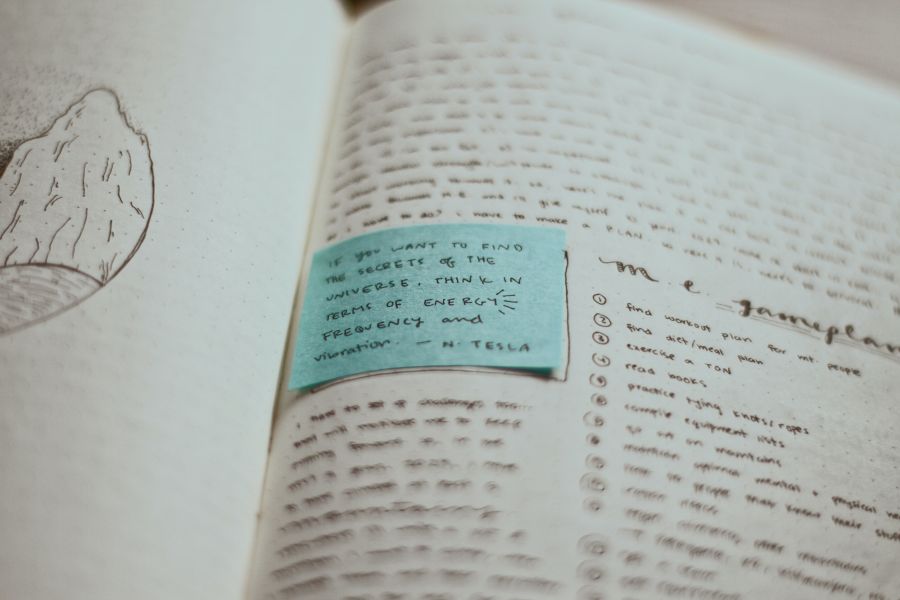高中英语教学设计摘要1
教学准备
教学目标
a. 重点词汇和短语
realistic, abstract, religion, religious, sculpture, gallery, belief, consequent, consequently, aim, symbol, value, focus, possession, convince, impressionism, impressionist, shadow, ridiculous, nowadays, attempt, predict, focus on, a great deal, scores of
b. 重点句式
There are so many ... that it would be impossible to ... P1
People became focused more on ... and less on ... P2
If the rules of perspective had not been discovered, people would not have been able to paint ... P2
教学重难点
a. 重点词汇和短语
realistic, abstract, religion, religious, sculpture, gallery, belief, consequent, consequently, aim, symbol, value, focus, possession, convince, impressionism, impressionist, shadow, ridiculous, nowadays, attempt, predict, focus on, a great deal, scores of
b. 重点句式
There are so many ... that it would be impossible to ... P1
People became focused more on ... and less on ... P2
If the rules of perspective had not been discovered, people would not have been able to paint ... P2
教学过程
Teaching procedures:
【写一写】
(Some pictures are given to the students to learn some about western paintings)
写出所有相应关于作品的英语名称
_____________________________________________________________________________________________________________________________________________
【想一想】
Which style of paintings do you prefer, western or Chinese? Why?
_____________________________________________________________________________
【skimming】Skim the text and complete the main idea of it.
The text mainly tells us _____ of the major movements in ________ art over the centuries.
绘制时间轴
课文P3---exercise 1
【判一判】
1. Western art has changed very little over the last seventeen centuries.
2. Painters in the Middle Ages did not use perspective.
3. Impressionists painted landscapes.
4. You cannot recognize any object in abstract modern art.
5. In the Renaissance most artists painted indoors.
6. Abstract art is still art style today.
【选一选】
Choose the best answer.
1. According to the text, art is least influenced by ________.
A. social changes
B. the way of life
C. the development of agriculture
D. beliefs of a people
2. When did painters mainly focus more on people and less on religion?
A. From 5th to 15th century AD.
B. From 15th to 16th century.
C. From late 19th to early 20th century.
D. From 20th century to today.
3. Who were the first to paint outdoors?
A. Painters in the Middle Ages.
B. Painters in the Renaissance.
C. The Impressionists.
D. Contemporary painters.
【巩固训练】 讲练通---P2 retelling
课后习题
【Homework】
课时跟踪训练
高中英语教学设计摘要2
教学准备
教学目标
1. 知识与技能目标
(1)通过阅读有关曼哈顿著名的艺术博物馆加深对博物馆的了解和认识。提高阅读能力同时学习有关介绍博物馆的相关词汇和表达,并能在特定语境中合理运用。
(2)通过扮演导游对感兴趣的博物馆进行介绍,提高学生的英语口头表达能力同时掌握本单元教学目标和要求中的词汇用法。
(3)通过提供相关词汇进行对潍坊本地的博物馆(潍坊风筝博物馆、杨家埠民间艺术大观园)写一个宣传广告,提高学生的英语写作能力。
2. 过程与方法目标
(1)通过展现曼哈顿以及曼哈顿五个著名艺术馆的相关图片激发学生的学习兴趣,并激发学生头脑中相关的背景知识为节课做热身。
(2)通过阅读课文利用Skimming 和 Scanning阅读技能找到每个艺术馆的地理位置、艺术特色等相关信息,提高分析处理英文信息的能力。通过寻找描述每个艺术馆的关键词培养学生的归纳总结信息的能力,同时为下一个扮演导游介绍艺术馆的活动做铺垫,提供相关的语言词汇铺垫。
(3)通过提供相关词汇进行对潍坊本地的博物馆(潍坊风筝博物馆、杨家埠民间艺术大观园)写一个宣传广告,提高学生的英语写作能力。
3. 情感、态度、价值观目标
通过学习,使学生了解世界著名的艺术馆,培养学生的文化意识和对艺术的兴趣。同时激发学生对家乡的自豪感和热爱之情。
教学重难点
教学重点:阅读课文、运用文中相关词汇进行说和写的活动以提高学生读、写、说的能力。
教学难点:在说和写的过程中如何运用相关词汇和表达方式来正确、准确、有效的介绍各个艺术馆的特点。
教学过程
(一)展示学习目标与小组评价规则
(二)“导入”
展示曼哈顿的相关图片,展示课文中出现的5个艺术馆的图片及名字。
(三) Fast reading
快速扫读课文
(四)Detailed Reading: 详细阅读
(五)Challenge your speaking(口语能力提升)
提供参考词汇: Welcome to …
This museum is located in…
It displays(展出) art works in… centuries of …countries, including …
It will appeal to…
You shouldn’t miss…
(六)Challenge your writing (英语写作能力提升)
Watch the videos and then write an advertisement to introduce one of the museums in Weifang. within80 words
写作参考词汇:潍坊世界风筝博物馆(Weifang World Kite Museum)
杨家埠民间艺术大观园(Yangjiabu Folk Art Museum)
kite 风筝 wood-print new year pictures木板年画 be located in 位于
…is famous/well-known for …因…而出名 it displays/shows…展出
Here you can enjoy… 在这里你可以欣赏到… artist 艺术家 appeal to 吸引 tourist 游客 it’s well worth a visit 很值得参观
(七)成果展示
个别学生优秀作文展示
(黑板展示)
展示作文评分细则
教师点评
课后习题
测评练习
测评一:
从文中找出相对应的短语和句子。(预习测评)
1.宁愿做…
2.对…偏爱
3.值得一去
4.吸引
5.在于
6.不仅仅是
7.向…引进(介绍)
8.生活方式
9.贮存于
10. 入场费(门票)
11. 一个…的收藏
12.每两年
13.健在的艺术家
14.亨利.克莱.弗利克是纽约的一位富豪,于1919年去世,把他的房子、家具和艺术收藏品全部留给了美国人民。
15. 这家博物馆展示的不只是看得见的艺术之美,它还向你介绍了古代的生活方式。
16. 馆内没有永久展出,展品都是随时更换的。
测评二
Writing (写作测评)
Write an advertisement to introduce one of the museums in Weifang. within80 words
高中英语教学设计摘要3
教学准备
教学目标
教学目标(Teaching Aims)
知识与技能(Knowledge and Skills)
1. 了解教学大纲关于语法填空的命题特点。
2. 能够根据语法填空的命题特点自己编语法填空的题目
3. 掌握语法填空的解题方法与技巧
过程与方法(Process and Methods) 让每一位同学都能参与到课堂教学与活动中来,以小组或结对 的形式进行相互学习和讨论。
情感态度与价值观
(Feeling, Attitudes and Values) 学习应对语法填空是与课文相结合,让学生在了解各种不同诗歌形式的背景下学习语法填空的设题与解题特点,从而更加理解英语诗歌的特色,更加懂得如何阅读和欣赏英语诗歌。
教学重难点
教学重点
(Important Points) :1. 让学生了解语法填空的命题特点
2. 掌握语法填空的解题方法与技巧
教学难点
(Difficult Points):语法填空中词性的转换
教学过程
(Teachers’ Activities)
Step I: Lead-in
① Review the new words and expressions of this unit by them together, and then do Task 1---speak out the other forms according to the giv en words
② Listen to the song Jingle Bells and try to fill a word into each blank.
Step II : Pre-practising
1. Questions
① Do you think it is difficult to complete the items of blank-filling with grammar knowledge?
② Have you figured out the characteristics of the item?
2. Explaining
In this item there are 10 blanks for you to fill in with less than one proper word
① some blanks with a given word while others with none
② fill in the blanks with the proper form of the given word according to its grammatical and logical meaning.
③ choose a preposition, pronoun, conjunction or an article to fill in the blank without any given word.
3. Discussion
How can we finish the items step by step with our grammar knowledge?
① ___________________________________________.
② _ __________________________________________.
③ ___________________________________________.
Step III : While-practising
1. Making an item of grammatical blank-filling based on the para graph of the text.
① more than 5 blanks.
② some blanks with given word.
③ others with none.
2. exchange the item you made for your partner to complete it .
3. The whole class finis h the one the teacher prepared for them.
Step IV : Post-practising
1.Check some of the students’ anwsers and give comments.
2.Draw a conclusion
Step V: Homework Assign ment
1. Further improve your skills of dealing with the grammar filling.
2.Complete Ex.2 on Page 10, Nanfang New Class
高中英语教学设计摘要4
教学准备
教学目标
Teaching goals
1. Target language
a. Important words and phrases
Poem, poetry, recite, aspect, convey, nursery, rhyme, diamond, cottage, balloon, sparrow, tease, salty, endless, translate, nursery rhyme, take it easy, run out of, make up of
b. Important sentences
Which poem is about things that don’t make sense?
Poets use many different forms of poems to express themselves.
I hadn’t taken my eye off the ball.
We hadn’t taken it easy.
The poem is made up of five lines.
A lot of Tang poetry has been translated into English. The translations have a free form that English people like to copy.
2. Ability goals
a. Enable Ss to talk about different types of poems: nursery rhymes; list poems; cinquain,; haiku; Tang poems
b. Enable Ss to talk about different purposes of writing poems.
c. Understand the main theme of each poem.
d. Enable Ss to chant some of their favorite poems.
3. Learning ability
Enable Ss to distinguish different types of poems
教学重难点
Teaching important points
1. Talk about five main types of poems.
2. Understand the main purpose of writing the poems.
Teaching difficult points
1. Find the rhythm of each poem.
2. Chant the poem.
3. Understand the main purpose of writing the poems.
教学过程
Teaching procedures & ways
Step 1. Greetings
Step 2. Presentation
Ask Ss to think back and try to remember poems from their early childhood, either in Chinese or in English.
Talk about some famous poets both home and abroad, either ancient ones or modern ones.
Brainstorming: What will you think of when we talk about the word “poem”?
Step 3. Warming up
Read the questions in this part, reminding Ss what they notice about the above poems.(e.g. they have a strong beat, or they have rhyme, or they play with words and sounds, or perhaps some of them are funny because they make no sense.)
Tell Ss that there are many reasons why people write poetry. Give the examples on the Bb. Ask Ss why they think the poets wrote the poems they have just recited.. Write their suggestions on the board.
Give Ss a time limit of a few minutes. Divide the class into groups of four to discuss the purpose of writing poems. Ask one person from each group to read their group’s list and add their suggestions to the list on the board. (Suggested reasons: to create certain feelings or images in the reader; to share a feeling or experience; to describe something in detail or give an impression; to get the reader to think about an idea; to express a point of view; to make the reader experience the sight, sounds, smells, feel and tastes of something; to create a mood, to play with words--- their sounds, rhyme and rhythm.)
If time permits, in small groups or as a class, discuss the kinds of topics that poets write about.( people, animals, nature, landscapes, the sea, the seasons, stories, death, war, youth and old age, feeling and experiences, emotions like love, hate, sadness, regret and desire, etc.)
Step 4. Pre-reading
People from different countries write different kinds of poems. Get Ss to discuss the questions on Page 9 with their partners: Do you have a favorite poem in Chinese? Why ? Do you have a favorite poem in English? Why?
As to exercise 2, give Ss practice in an important reading skill: scanning a text, that is, looking through a text quickly to find specific information. Read the table in exercise 2 with the Ss. Tell them that they are going to look for the information in the table, just in the poems themselves, not in the other parts of the text. They are to look only for those pieces of information and not read every word. Do an example with them.
Suggested answers to exercise 2:
Step 5. Reading
Scanning
Get the Ss to read the passage quickly and accurately and meanwhile help the Ss to form a good habit of reading. Teacher gives Ss a couple of minutes to look through the whole passage. Tell them to read the text silently and then ask some detailed questions about the text on the slide show . Teacher should encourage Ss to express their ideas.
Q1. Why do people write poetry?
Q2. How many forms of poems are mentioned in the passage? What are they?
Q3. What does “nursery rhyme” mean? Why do they delight small children?
Q4. What’s the characteristic of “list poems”? What about “cinquain”?
Q5. Why do English People like “Haiku”?
Q6. Are you familiar with Tang Poems? Do you know the title of the last poem in the text?
Listening
Before Ss read the text, have them close their books and listen to the text with their eyes closed. This gives Ss the opportunity to listen to the sounds or “music” of the poems before reading them in detail. Tell them that it doesn’t matter if they don’t understand every word.
First reading
Get Ss to read the text carefully, finding the one sentence that sums up the paragraph of each part.. Underline the topic sentence.
Second reading
Tell Ss that they are going to look at the rhythm of two of the poems. Make sure they know what rhythm is. Read the limerick aloud and have Ss listen for the strong beats. Then have them clap the strong beats as you read. Mark the strong beats on the limerick on the board.
There was an old man with a beard
Who said “it is just as I feared”.
“Four insects and then
Two birds and a hen
Have all made a home in my beard”.
Now read the poem A & B. Ask them to mark the strong beats on the two poems that have a strong rhythm. Check their answers . Then play the tape and get them to clap to the strong beats in those two poems.
Third reading
Just as any scene can serve as the subject of a painting, so any part of daily life can provide material for a poem.. Of course, the choice that the artist or poet makes relates to his or her purpose. Poetry is usually short and compact, so it should be read several times, preferably aloud, to appreciate its meaning. Read the last poem (Poem H), and answer the following questions:
Q1. What parts of the poem suggest that the woman loves her husband?
Q2. How do you understand the sentence” Should the journeyer return, this stone would utter speech.”? Explain the sentence in your own words.
Q3. What picture do you have in your mind when you read the above sentences?
Q4. Do you know the Chinese title of this poem? Do you know the Chinese version of the poem?
Step 6. Make a short summary of this period.
课后习题
Homework
1. Surf some websites to find out more information about poets.
2. Review the content of the reading passage.
3. Finish the exercises on Page 12& 13.
高中英语教学设计摘要5
教学准备
教学目标
Teaching aims:
a) to make students clear what a healthy life is about.
b) to enable students to use the grammatical structure “It”.
教学重难点
Teaching points:the skill Difficult points: how to make every student get involved in class learning actively and attentively.
Difficult points: how to make every student get involved in class learning actively and attentively.
教学过程
Teaching procedures:
Step 1: lead- in
After exchanging greetings, the student on duty gives a daily report based on the given topic “ a healthy life” which is also the title of this unit.
Step 2: learning tasks presentation:
Unit 3 A Healthy Life
Section 1: How to keep healthy in both body and mind?
(1). What is a healthy person?
(2). What is an unhealthy person?
(3). How to make some changes?
Section2: A Serious Problem ------ smoking
Why? Harmful effects? Ways to quit?
By presenting the above contents , the students can have a clear mind what we are going to learn in this class and it can greatly improve our teaching and learning efficiency.
Step 3: the detailed learning
This part includes not only vocabulary but also some useful expressions.
(1). A discussion topic is: what do you think is most important in your life and why?
Later a motto for students: Health is the first wealth.
(2).Words learning and further discussion:
By showing students some celebrities’ pictures and learning their lifestyles, the teacher inspires them to think about their own lifestyles and give them some tips to make some changes in the future life.
(3).Conclusion of section 1
This task is finished by individual in given time on the work sheet
Section Ⅰ:Conclusion:
1. What is a healthy person?
A healthy person is someone_____ is _______in both _____ and _______.
2. what are the healthy problems?
抑郁症___________ 癌症_________熬夜________肥胖_________
3.How to keep healthy in both body and mind?
①Doing sports ________.
②Keeping a _______diet: eat more________ and ______.
③Keeping a good___________.
④Avoid being __________.
⑤Early to bed and early to ____,makes a man_______,_____and______.
⑥Quit smoking and drinking.
( 4) .Section 2: A Serious Healthy Problem-----Smoking
This topic is discussed in three parts: why do people smoke?
What are the harmful effects? How to quit smoking?
After their discussion, each group should share with others their own sentences, which should contain “ it” structure. The purpose is to enable students to have a good knowledge of the grammar rules of this unit.
Grammar note: It + is + adj./ n./ p.p. + infinite/ clause/ -ing form
A serious healthy problem: smoking
(1). Why? (Examples)
①(why)It is true that your body becomes addicted to nicotine.
②(effects) It is a shame to harm the second-hand smokers.
③(ways to quit) It is hoped that you boys can make up your mind to quit smoking.
(2). Group work: making 3 sentences with the structure of “ It”
You are supposed to talk about the topic of “smoking” and your work should be interesting and impressive!
(3). sharing:
Step 4: conclusion of section 2
Smoking seriously harms you and others around you!
Step5: Homework
Make some sentences about the harmful effects of smoking and the ways to quit smoking with “it” structure.
①harmful effects of smoking:
(lungs and hearts/ babies/ second-hand smokers/ terrible smell/ yellow fingers/ run slowly, etc)
②ways to quit smoking:
(plan/ make one’s mind to/ break the habit / relax/ get help when it is necessary/ keep trying,etc)
Step6: Reflection:
On one hand, the design of this class contains very colorful pictures and some flash, which can make students greatly interested in class learning. Secondly, the combination of topic discussion and grammar learning is a new try and actually it works well, because it makes the tedious grammar learning easier and more practical.
On the other hand, we have so much work to do in the limited class time, so every minute should be used effectively, otherwise, the tasks can not be finished in time. Secondly, the new try is a challenge for teacher and students, so students should be informed of the importance of learning in advance, so that we can make it!
相关文章
八年级英语听力题必备2023-06-17 03:39:12
英语口语素材整理2023-06-16 03:09:19
九年级英语教研组教学计划2023-06-02 12:38:01
基础英语口语练习必备材料2023-06-16 04:35:48
英语学习方法高一2023-06-07 12:02:32
英语工作教学计划分析五篇2023-06-12 11:07:50
上海对外经贸大学和北京交通大学(威海校区)对比哪个好(排名分数线区2024-03-31 16:25:18
河北高考排名237950名物理能上什么大学(能报哪些学校)2024-03-31 16:19:23
山东城市建设职业学院在山东招生人数和招生计划 多少人2024-03-31 16:15:16
上海农林职业技术学院在湖南招生人数和招生计划 多少人2024-03-31 16:12:52
吉林农业科技学院在湖南招生人数和招生计划 多少人2024-03-31 16:09:19
安徽高考多少分可以上云南经贸外事职业学院 招生人数和最低分2024-03-31 16:04:52
英语口语训练资料必备2023-06-04 15:33:44
新学期英语教学研修计划2023-06-08 10:37:44
小学三年级英语课程教案范文五篇2023-06-17 21:07:11





